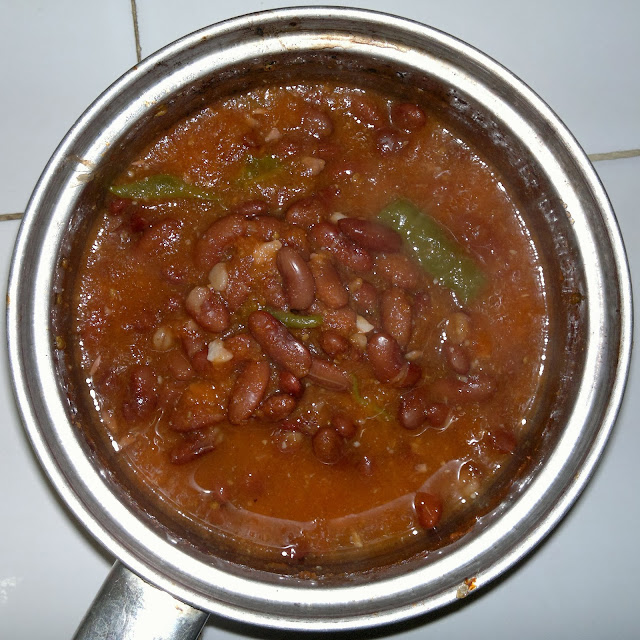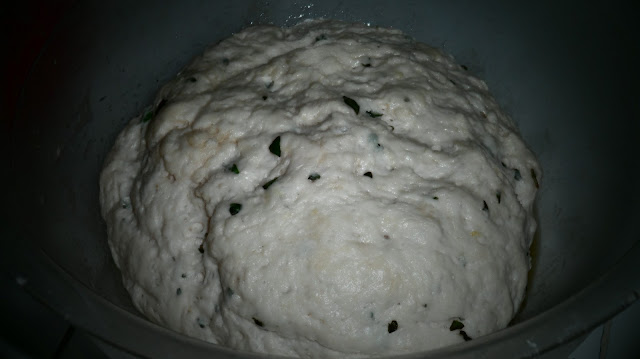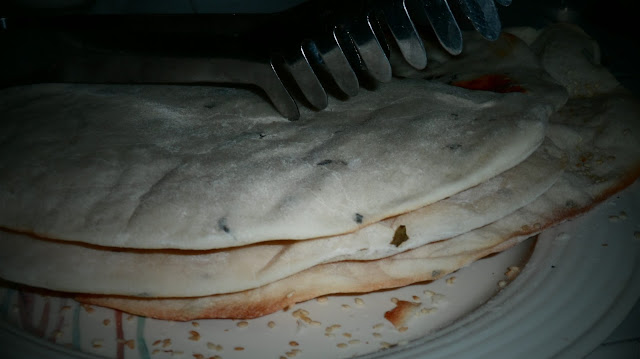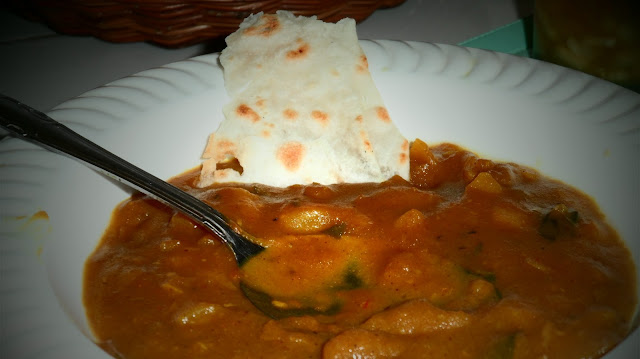The previous entry was on a few food items from North Sumatra and Aceh. The day after the wondrous night we had out in the streets of Langsa where we feasted on awesome sidewalk snacks, we flew to a place much like the one I live in--only with better roads.
Feast on these food items from Central Java:
 |
| Pokok Jeraju Gunung (Sawtooth Coriander / Long Coriander) |
I came across this plant growing wildly among the grasses and weeds on a mountain where a coffee processing plant stood and it had an oh so familiar aroma. It took me a good minute to realise it smelled like coriander--only a lot, lot stronger. It reminded me of a green I ate while staying with the Vietnamese refugee community in Palawan several years ago. I picked a leaf and nibbled on it a bit. My conviction that it was edible and that I had eaten it before only got stronger!
It turns out the plant is called Eryngium foetidum, also called Sawtooth coriander or long coriander and it's a common herb used in Southeast Asian cuisine.
 |
| Sop Buah (Fruit Soup) |
On the last night of one of our fellow travelling friends, we went to the city centre square of Pati City, called
Alun-Alun and got our first taste of Javanese street food. This fruit soup is made with various sliced fruits, condensed milk, pink food colouring and ice. Stir and experience awesomeness!
 |
| Bakmi Jawa (Javanese Noodles) |
This is basically boiled noodles with sweet soy sauce, scrambled eggs, cabbage and chilli. It's a meat-free version of what everyone else on my table was eating. We ate this along with the item above.
 |
| Tempeh, Taho (Tofu), & Telur (Eggs) |
This is a typical breakfast plate for me in Central Java. Tempeh is caked fermented soy beans. It is Indonesian in origin and is much richer in plant protein content than its Sinosphere cousin, tofu--which here is simply plain fried. The egg is an omelette with scallions and bits of tomato.
 |
| Kacang Buncis (Green Beans) stir-fry |
The dish you see is another one of the pure vegetarian options found in a typical lunch table in Pati, Central Java. It's basically green beans, hot chilli pepper and carrots stir-fried in oil with garlic. I like to drizzle it with a molasses and soy-based sweet Indonesian sauce called
Kecap.
Right next to the stir-fry, you can see small cucumber halves. They are eaten like a fruit to pipe down the heat of your meal (since Indonesian food is very spicy). It really helps your mouth cope with the heat especially if you are not used to chilli sauce in literally every single meal.
 |
| Tempeh, Telur (Eggs), & Perkedel Kentang (Fried Potato Balls) |
I love the way they cooked this
Tempeh--thinly sliced, marinated in brine and soy sauce, and deep fried to a heavenly crisp. The dark liquid sitting on it is called
kecap, the sweet soy and molasses-based Indonesian sauce.
My favourite item on this photo is the one closest to the camera--that thing that looks like a dumpling. It's mashed potatoes with herbs and a special vegetarian sauce, rolled into a ball, drenched in beaten egg and deep fried. Mmmmm! Amazing!
The brown stuff above are tea eggs--just hard boiled eggs marinated in black tea.
 |
| Es Kelapa Muda (Iced Coconut Milk) |
This is coconut water with coconut milk and shredded young coconut flesh. I remember there being a gelatinous thing in there--that pink fleshy thing on top. They said it's made from seaweed. So, yeah, vegetarian--except perhaps for the pink food colouring but I didn't give it much of a thought anymore.
 |
| Es Jus Jeruk (Iced Tangerine Juice) |
This is iced tangerine juice. It's served with a heap of sugar which they leave you to stir for yourself with a spoon. People who don't like their tea too sweet just leave the sugar alone without stirring and take gentle sips. Either way, it's really good.
 |
| Nasi Goreng Vegetarian (Vegetarian Fried Rice) |
Fried rice sold on the streets usually has chicken or beef in it when eaten by most people but you can tell the vendors not to put any. What amazed me about this dish is they actually fried the rice in a wok and added the toppings only after we placed our orders. It was very fast and very efficient. You always know you're eating freshly cooked food because you see it being made everytime.
 |
| Martabak Manis (Sweet Stuffed Pancake) |
Martabak is of Indian origin, much like most of Indonesian cuisine. There are two types of stuffed pancake: sweet and mealy. What you see in the photo is the sweet kind, eaten as a snack.
Manis means sweet. It brushed with chocolate and peanut syrup and then folded in half before being sliced, ready for eating.
The mealy kind is filled with a salty and spicy type of sauce with vegetables, herbs, chilli, and sometimes meat. It is eaten as a meal, obviously. It is usually sold in the same stall that the sweet kind is found.








































